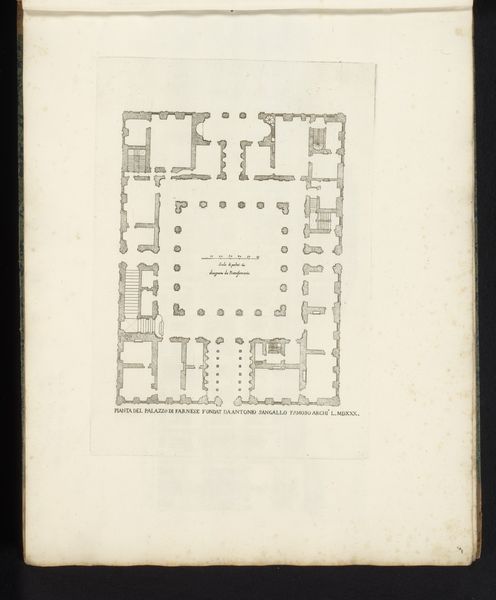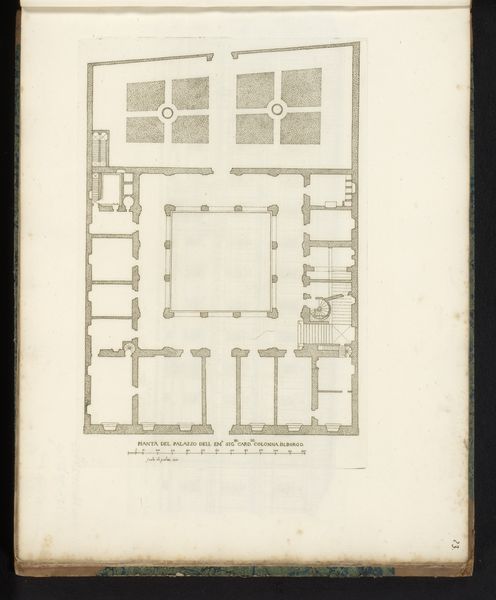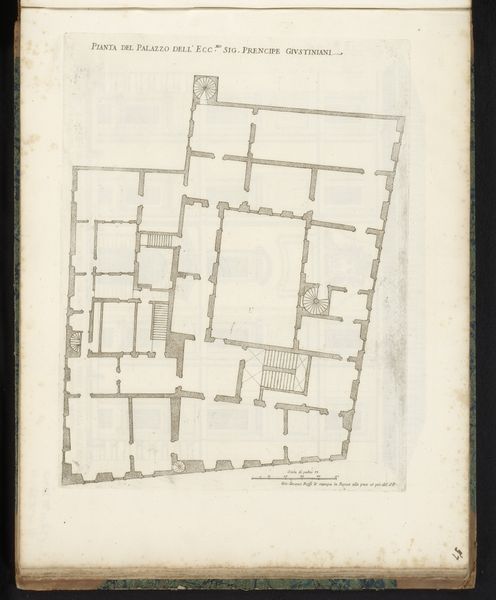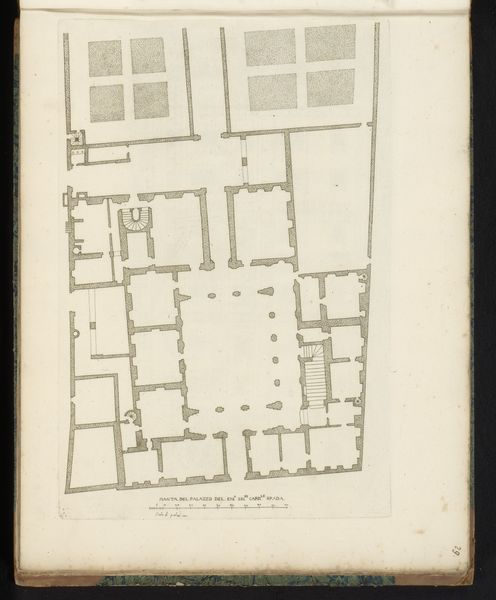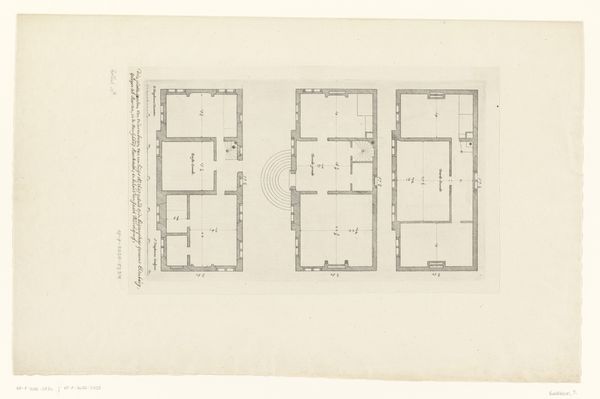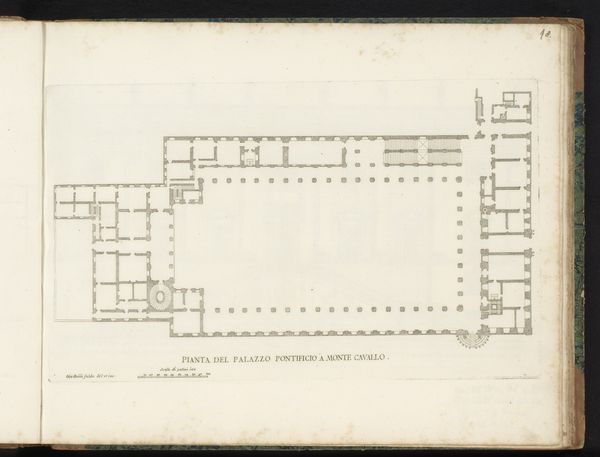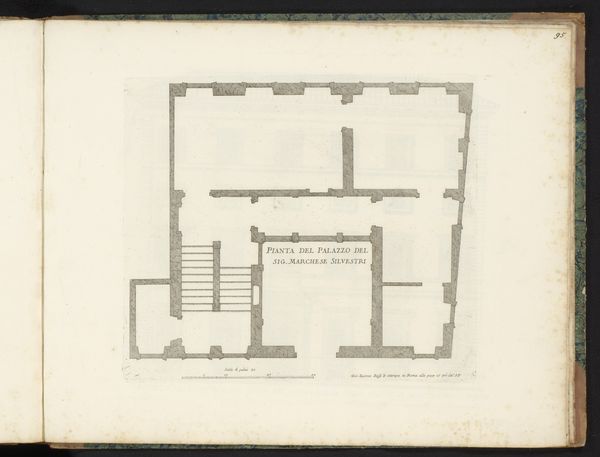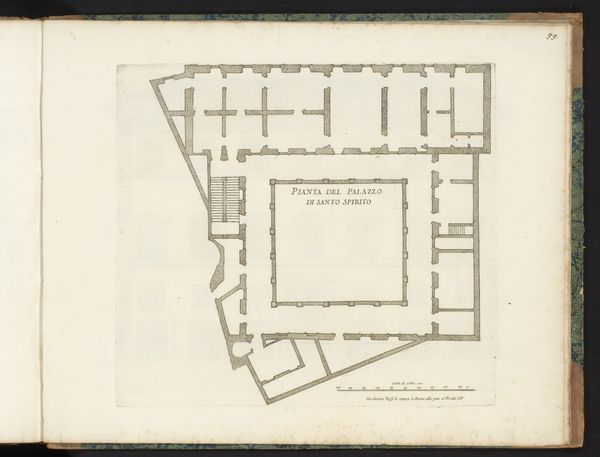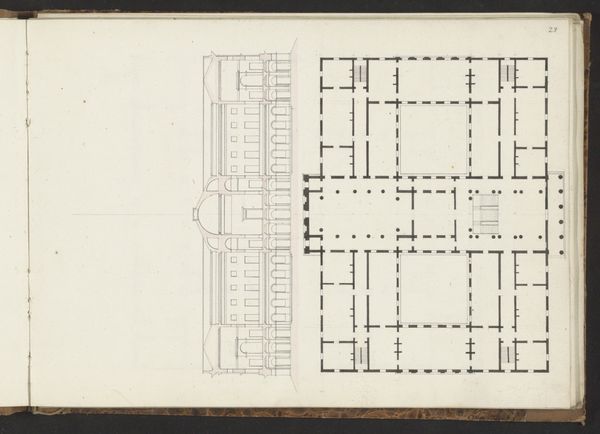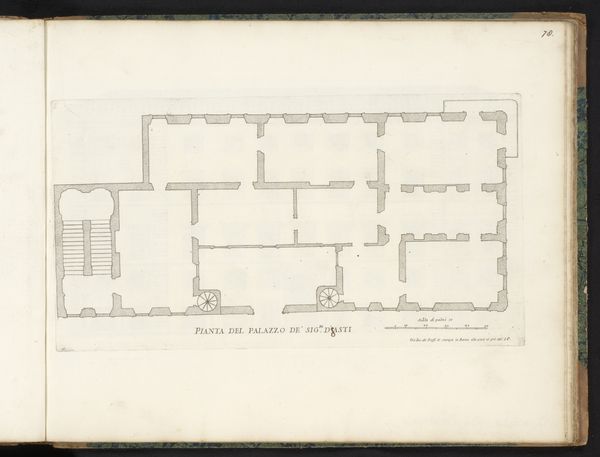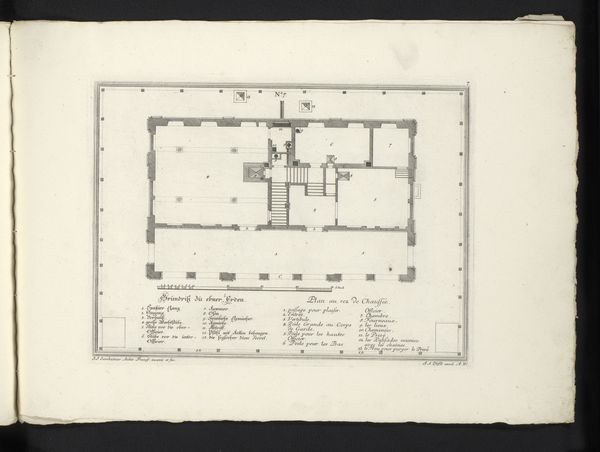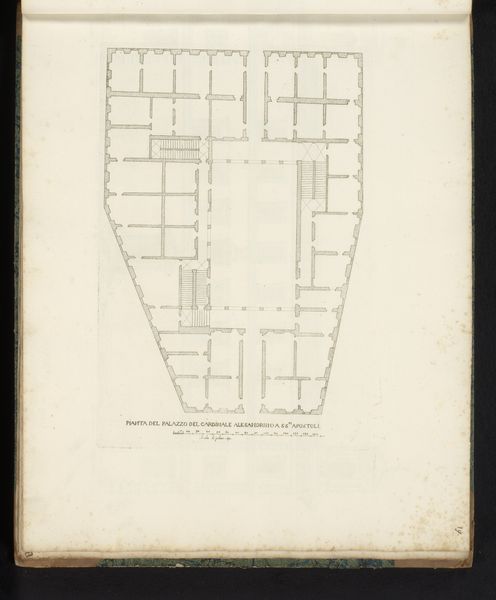
drawing, print, etching, paper, ink, architecture
#
drawing
#
baroque
# print
#
etching
#
paper
#
ink
#
cityscape
#
architecture
Dimensions: height 334 mm, width 265 mm
Copyright: Rijks Museum: Open Domain
Curator: This intricate drawing, an etching in ink on paper, presents a floor plan of the Palazzo Madama, dating from after 1655 and created by Giovanni Battista Falda. Editor: My initial impression is one of cool precision. The pale ink on paper gives it a ghostly quality, as if we're peering into the very bones of the building. You can really sense the physical labor involved in its making and, as a print, how that labour was disseminated. Curator: Absolutely. Falda's work played a significant role in shaping the public's perception of Rome's architectural landscape. This particular print provides insight into the palace's structure and the distribution of power within its walls during that time. Think about how access to such imagery could affect architectural styles elsewhere. Editor: It's a stark contrast to the ornateness one might expect from Baroque architecture. You see a certain repetition of line and form that hints at modular construction, repeated efforts, and craft techniques used across large-scale workshops. Is it the printing process itself that strips it bare, showing only what's truly necessary, material, and replicable? Curator: Perhaps. Yet the precision and detail suggest that Falda wasn't simply interested in replicability, but also in conveying an accurate representation of the Palazzo's design and dimensions. He wanted to reveal the architecture of power. The building itself later was transformed and recontextualized repeatedly, yet the printed architectural records become standardized reference material for artisans. Editor: And look how the ink itself almost bleeds slightly into the paper's fibers. We're presented with a confluence of artistic intention, practical use, and sheer material reaction, blurring boundaries between documentation and art. The subtle material properties create texture. Curator: Indeed, each print bears unique markings. And to your point about access and dissemination, prints like this circulated among architects, patrons, and even tourists, standardizing Italian designs while simultaneously shaping and fueling the visual culture of the Baroque period. Editor: This piece provides so much to reflect on: a glimpse of building methods, artistic distribution and labour in 17th century architecture. Curator: And the very nature of documentation and how prints contribute to the lasting impression and power of grand structures.
Comments
No comments
Be the first to comment and join the conversation on the ultimate creative platform.
